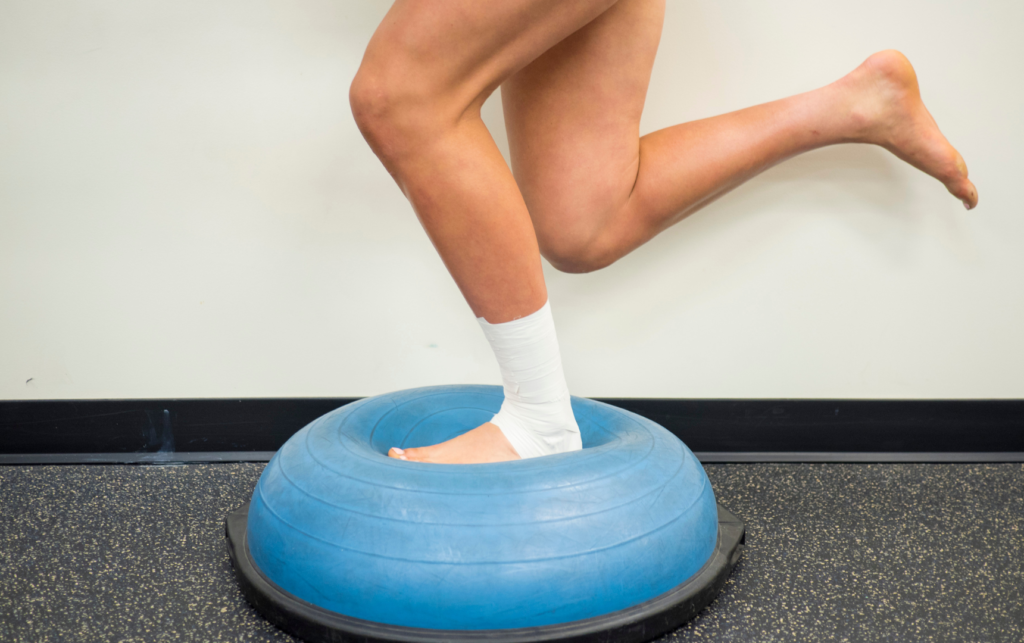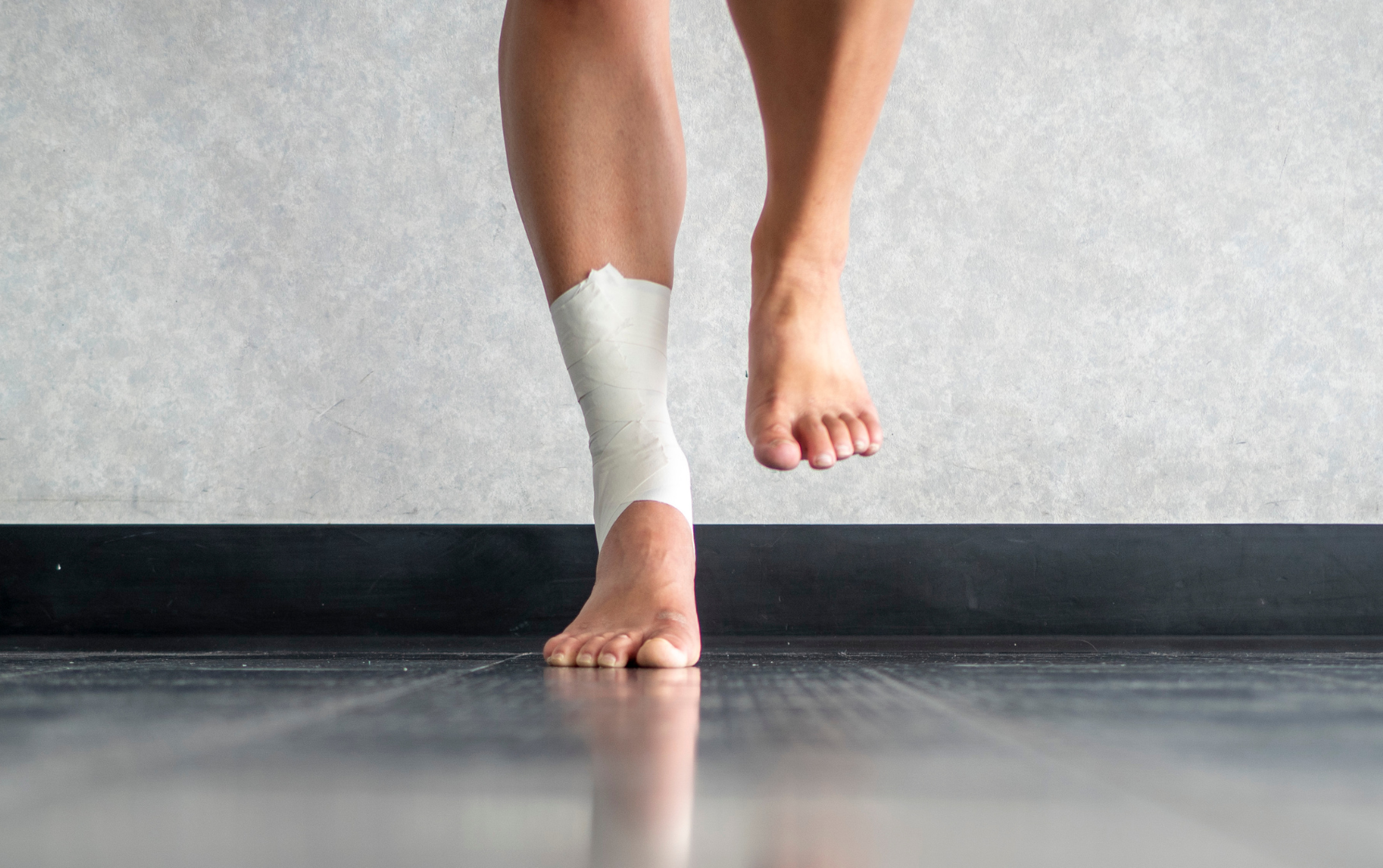Sprained ankles are a common injury that can occur to anyone, from athletes to weekend warriors to people who simply trip on a curb. According to the American Orthopaedic Foot & Ankle Society (AOFAS), ankle sprains are one of the most common types of musculoskeletal injuries, affecting more than 25,000 people each day in the United States. While rest and ice can help with the initial pain and swelling, proper rehabilitation is essential for a complete and lasting recovery.

Enter the exercise physiologist, a healthcare professional who specialises in the scientific principles of exercise and physical activity. In this article, we’ll explore what an exercise physiologist is, how they can help with sprained ankles, and the benefits of working with one for your rehabilitation.
What is an Exercise Physiologist?
An exercise physiologist is a healthcare professional who holds a degree in exercise science and musculoskeletal rehabilitation. According to the American Society of Exercise Physiologists (ASEP), they are trained to understand the body’s response to exercise and physical activity and how to use this knowledge to improve health and treat medical conditions.
Exercise physiologists work in a variety of settings, from hospitals and rehabilitation clinics to fitness centers and sports teams. They may work with athletes to improve performance, with patients to manage chronic conditions such as diabetes or heart disease, or with people recovering from injuries such as sprained ankles.
How Exercise Physiologists Help with Sprained Ankles
Exercise physiologists understand the anatomy and biomechanics of the ankle and can use this knowledge to design a rehabilitation program tailored specifically to your needs. According to a study published in the Journal of Sport Rehabilitation, exercise physiologists can play a key role in the management of sprained ankles by using evidence-based approaches to help patients regain strength and mobility. They can also help you manage pain and swelling, as well as develop a program that addresses any muscle imbalances or weaknesses that may have contributed to the injury in the first place.
One of the key aspects of rehabilitation for a sprained ankle is regaining strength and flexibility.

One of the key aspects of rehabilitation for a sprained ankle is regaining strength and flexibility. Exercise physiologists can guide you through a progressive program of exercises to help you regain these essential elements, while also ensuring that you do not reinjure the ankle. A systematic review published in the Journal of Athletic Training found that exercise is effective in improving outcomes for individuals with ankle sprains, and that exercise programs led by qualified professionals such as exercise physiologists result in better outcomes compared to self-directed exercise programs.
Benefits of Working with an Exercise Physiologist for Sprained Ankles
Working with an exercise physiologist for your sprained ankle can offer several benefits compared to rehabilitation on your own or with a general physical therapist. Here are just a few of the advantages:
- Quicker and More Complete Recovery: Exercise physiologists have the knowledge and expertise to design a rehabilitation program that is specifically tailored to your needs and goals. This means that you can expect a quicker and more complete recovery compared to a generic program or self-rehabilitation. A study published in the Journal of Sports Medicine and Physical Fitness found that supervised exercise programs led by exercise physiologists resulted in faster and more complete recoveries compared to self-directed exercise programs for individuals with ankle sprains.
- Decreased Risk of Re-Injury: Exercise physiologists understand the anatomy and biomechanics of the ankle, and can work with you to address any muscle imbalances or weaknesses that may have contributed to the injury in the first place. This helps to reduce the risk of re-injury and ensures a more lasting recovery. A study published in the American Journal of Sports Medicine found that exercise physiologists can effectively address muscle imbalances that often occur after an ankle sprain, reducing the risk of re-injury.
- Better Pain Management: Exercise physiologists can work with you to manage pain and swelling during rehabilitation, using techniques such as low-impact exercises, range-of-motion exercises, and manual therapy. A study published in the Journal of Physical Therapy Science found that exercise therapy, when combined with manual therapy, can effectively reduce pain and improve function in individuals with ankle sprains.
- Personalised Care: Exercise physiologists take the time to understand your individual needs and goals, and design a rehabilitation program that is specifically tailored to you. This ensures that you receive the best possible care for your sprained ankle and can make progress towards a complete recovery.
- Most Recent Up-to-date Research Methods: Exercise physiologists stay up-to-date with the latest research and techniques in the field of rehabilitation, and can incorporate the latest and most effective approaches into your rehabilitation program.

Conclusion
If you have a sprained ankle, working with an exercise physiologist can be a highly effective way to achieve a complete and lasting recovery. With their expertise in the scientific principles of exercise and physical activity, they can design a rehabilitation program that is specifically tailored to your needs, address any muscle imbalances or weaknesses, and help you manage pain and swelling. Whether you are an athlete, a weekend warrior, or simply someone looking to recover from a sprained ankle, an exercise physiologist can be a valuable partner in your rehabilitation journey.
Have you recently sprained your ankle? Working with one of our exercise physiologists can help you achieve a full recovery. They can design a personalised rehabilitation program that addresses your specific needs and goals. To find out more about how we can help you, contact us today. We can’t wait to help you get started on the path to better health and well-being.






